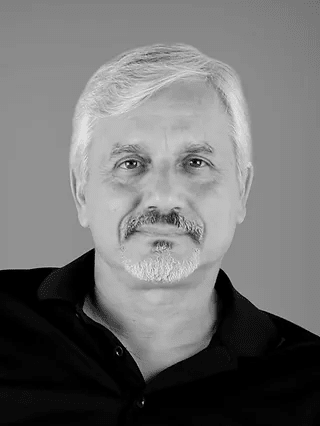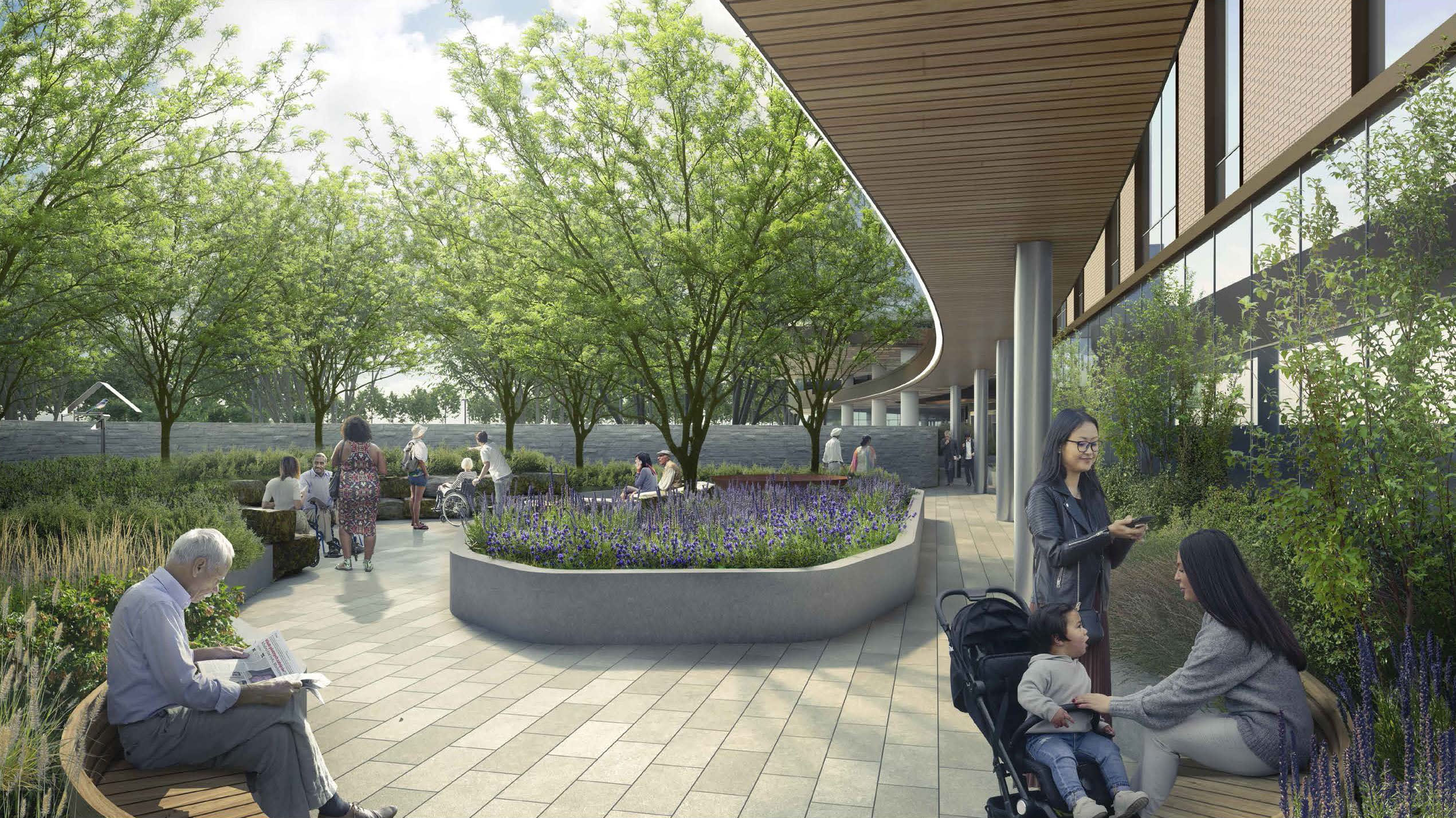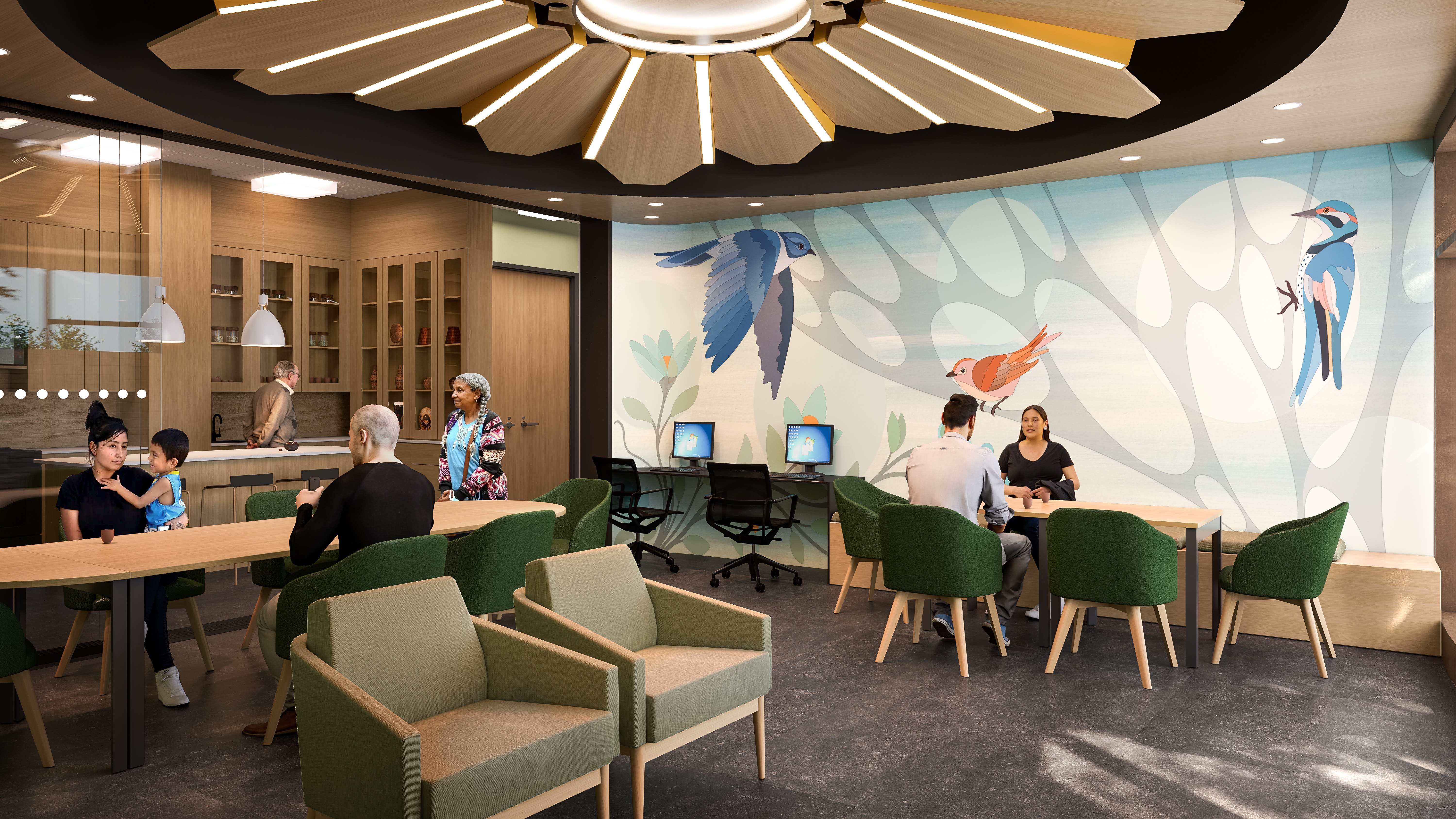When Brian Porter first reviewed the requirements document for the South Niagara Hospital, he was immediately drawn to the unique nature of the project. It would be the first hospital he worked on where a request was being made to have Indigenous concepts and representation woven into the fabric of the entire project.
Porter is the Principal at Two Row Architect and one of only a handful of Indigenous architects in Canada. Opened in 1992, Two Row Architect is a 100-per-cent Indigenous-owned business operated from the Six Nations of the Grand River, Tkaronto (Toronto) and Calgary. The firm provides services to projects for Indigenous clients and those that incorporate Indigenous cultural ideologies and teachings into their architecture. Porter has worked with EllisDon on a number of previous projects and was asked to join the team at EllisDon Infrastructure Healthcare (EDIH) in bidding on the South Niagara Hospital. The project called for an Indigenous architect to be part of the design team.
He could see from the requirements document that Niagara Health’s approach was ahead of many other institutions. Through the land acknowledgement ceremonies that took place on the site, to Niagara Health’s approach to smudging, to specific areas being incorporated into the plans to support gathering and contemplation, it showed that the organization greatly valued its relationship with the Indigenous community.

Two Row Architect is known for its unique approach to architectural planning. Rooted in Indigenous values, they prioritize community engagement and listening, knowing that when a building like a hospital is going to be used by almost every person in the community, it needs to be designed with their input. In the early stages of planning for the South Niagara Hospital, Two Row Architect participated in talking circles with Indigenous community members and representatives from service groups. The objective was to learn and understand what was important to them so they could apply those elements into the design of the building. Two Row Architect took what was learned in those talking circles and, through collaborations with the entire Design Team, manifested those ideas into architecture.

“The goal during the talking circles is to listen 95 per cent of the time and allow people to speak freely in a comfortable environment. Through the talking circles, we learned a lot about the goals and aspirations of the community and how they want to see their culture infused into the building,” says Porter. “We take what we learn from the talking circles and apply that to the project in culturally appropriate and meaningful ways.”
The company worked with the team of architects, landscape architects as well as the mechanical, electrical, structural and civil engineers, encouraging them all to think about and incorporate Indigenous values into their respective components of the design. Together, with representatives from the community, they designed the Indigenous Healing Space and garden which will be prominently placed near the main entrance of the South Niagara Hospital to provide a culturally safe and welcoming space for all Indigenous Peoples. They also looked for ways that Indigenous culture meshed with the Niagara Region and how those concepts could be incorporated into the architecture of the building. They recognized the site was a greenspace and home to trees, birds, animals, bees and different ecosystems that all had a right to occupy that space just as much as the people. They worked hard to make strong connections to the outdoors and bring as much natural light as possible to the indoor spaces. The result is a hospital that better represents the convergence of physical, emotional, spiritual and mental health as contributors to a person’s overall state of well-being.
“We wanted the hospital to be more artistic and less clinical, to make it as comfortable and healthy as possible for all people who have to use the space.”
After EDIH was awarded the contract for the project, an 18-month design development process began. During this time, the community was again able to comment on and help finalize what the spaces and design would look like.
“The end result is an integration between western medicine and Indigenous values,” says Porter. “The process gave the community a chance to understand that they have equity in the project and that it is their space.”
When it opens, the hope is these spaces within the South Niagara Hospital will function as a community centre and will allow for Indigenous ceremonies to take place there, positioning the hospital to be a place of wellness and healing, and not just a place of sickness.
“The end result is an integration between western medicine and Indigenous values."
While it is becoming more common for these types of projects to include the role for an Indigenous advisor or consultant, it’s not always the case. The South Niagara Hospital project has raised the bar from Porter’s perspective in terms of how projects of this scope and size should be incorporating Indigenous values.
“Partners that worked with us on the South Niagara Project, such as Parkin Architects and Adamson Associates Architects, recognize the shortfall when similar projects don’t have Indigenous values incorporated into their planning. After working together on South Niagara, they come to us to help add that perspective into other project designs,” he says.

The Indigenous Healing Space will be located near the main entrance to the hospital, and provide access to the Indigenous Healing Garden. Pictured artwork by Rebecca G.J. Baird.
Read this story and more in the November issue of the South Niagara Hospital Project Newsletter.

